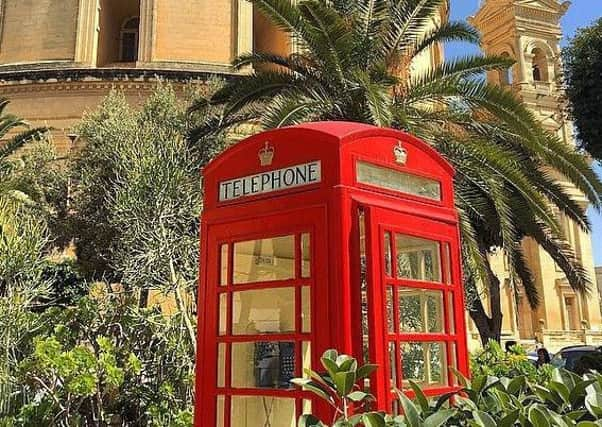A little piece of history 1500 miles from home


My friend Duncan Comrie has been fighting on this front for years and I for one hope that this time something happens.
A few years ago I wrote about a trip to Malta where one of the highlights was a visit to see the fantastic domed church in Mosta. It is a design masterpiece both inside and out but I had eyes only for the red telephone kiosk tucked away in the corner to the left of the building.
Advertisement
Hide AdAdvertisement
Hide AdCloser inspection revealed the message ‘CARRON, STIRLINGSHIRE’ – another little piece of Falkirk 1500 miles from home.
I wasn’t surprised because I had already spotted a pillar box in Valetta marked ‘McDowell and Stevens, Falkirk and London’ as well as kiosks all over the place. Of course Falkirk folk are well used to finding things like this in various parts of the world and especially where the imperial Brits have left their mark. It is often said that you can identify a ‘bairn’ abroad: he is the man walking on the ramparts of castles and forts from Canada to South Africa carefully examining all the big cannons for the Carron marker! Those famous guns made the company’s fortune in the early centuries but it was the pillar boxes and telephone kiosks which helped keep the company afloat in the 20th century as demand for cast iron goods declined.
The first pillar box in Britain was erected in Jersey in 1852 followed three years later by six in London. Various designs were tried including hexagonal pillars before the classic cylinder became the settled version. It survived until modern times and is by a long way the most familiar. Carron were early in the business with contracts from the Post Office as early as 1860.
Over the years tens of thousands were cast and finished in Mungal Foundry’s Structural Department.
Advertisement
Hide AdAdvertisement
Hide AdThe evolution of the classic telephone kiosk was a more convoluted process beginning around 1900. Several weird and wonderful designs were produced including some with thatched roofs to suit rural and seaside views, and others with domes to help them blend in with historic places. There were even concrete versions. Some incorporated letter boxes and stamp machines but by 1924 the Post Office had taken the decision to stick by an agreed standard design in cast iron.
Three architects were invited to tender: Sir John James Burnet (educated at Blairlodge in Polmont) and Sir Robert Lorimer were not successful as the Fine Art Commission chose the submission of Sir Giles Gilbert Scott.
Give or take a tweak or two his design remains the one we all recognise.
A decade later the same architect made some modifications and the Post Office adopted red as the universal colour of what was named the ‘Jubilee’ kiosk to mark the 25th year of George V’s reign. The inside mechanism with buttons A and B appeared and you had to put in your money, dial the number and, when the other person answered, press button A to connect. If there was no reply, press button B and your cash came clattering down.
Advertisement
Hide AdAdvertisement
Hide AdCarron turned out thousands of these kiosks and today they are very collectable as garden ornaments. Let’s hope that we can persuade the powers-that-be to save at least one or two and put them in the High Street as a wee reminder of the Falkirk bairns who made them.